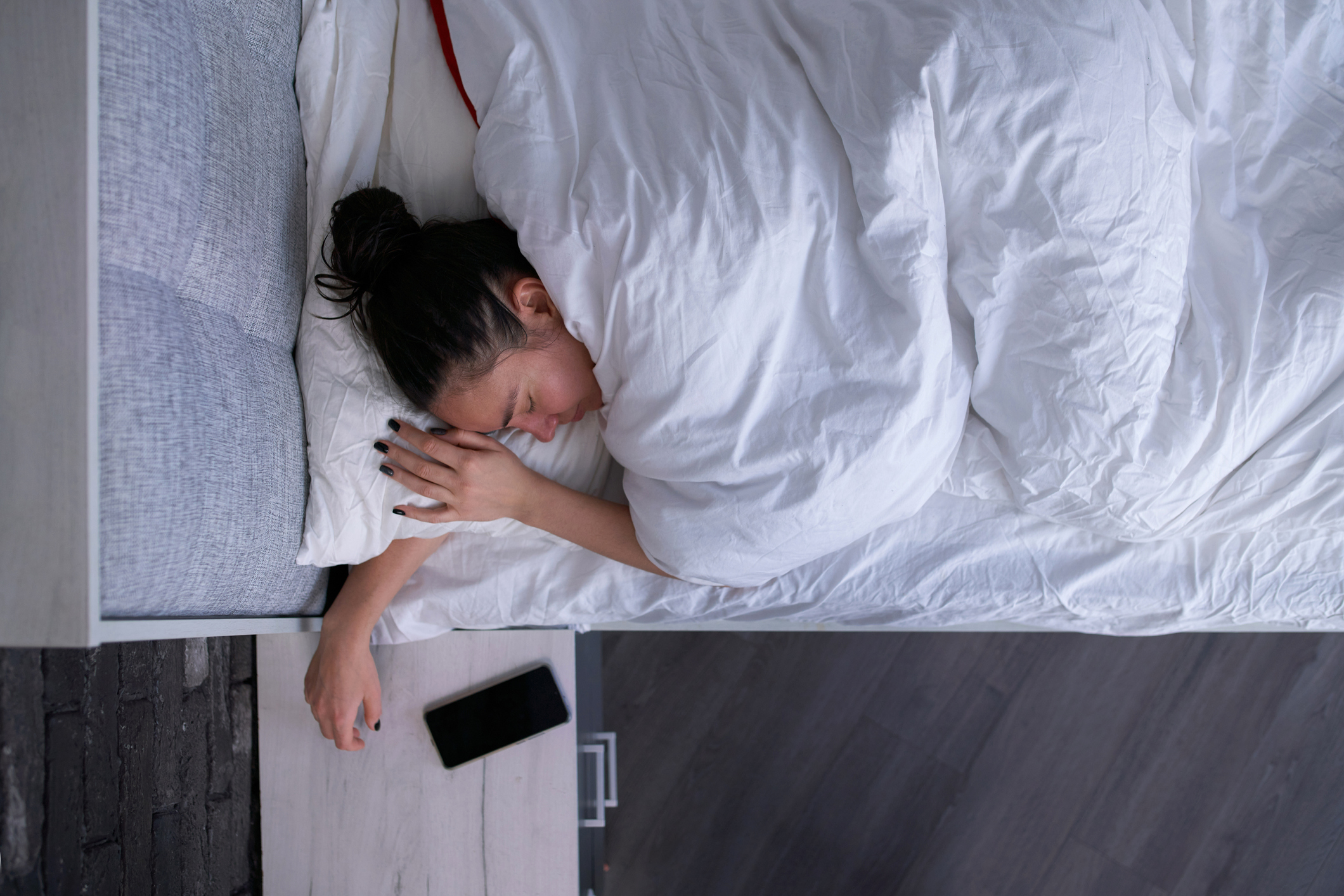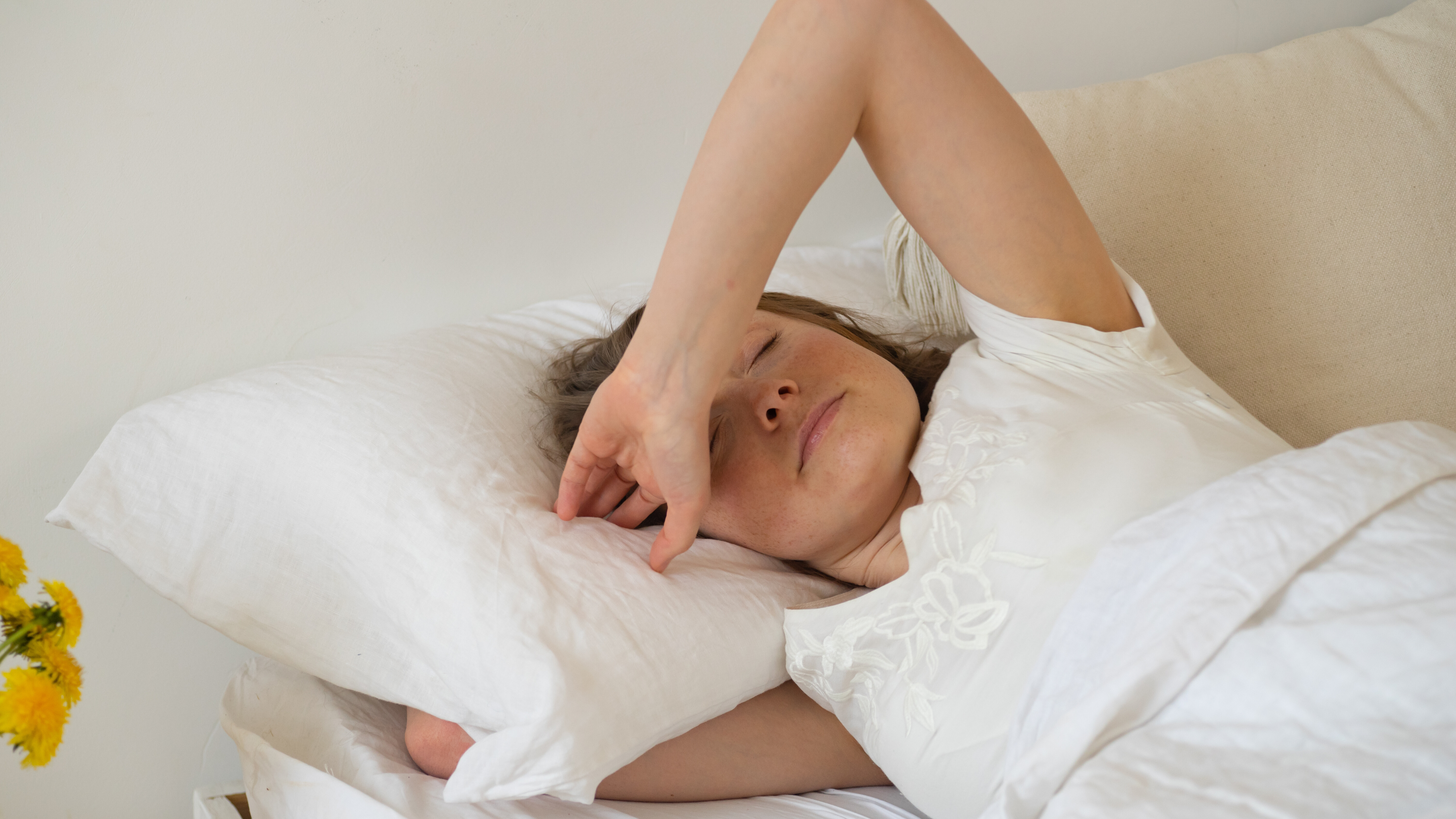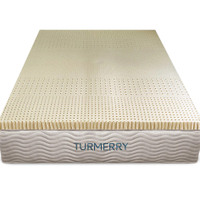5 signs you need a latex mattress, not a memory foam
Could a latex mattress be better for your sleep than a memory foam bed?

While memory foam mattresses deliver cushioning comfort at a budget-friendly price, they don't cater to everyone's sleep needs. If you currently own a memory foam bed and find yourself experiencing restless nights or achy mornings, your mattress may be to blame.
Our guide to the best mattresses features lots of memory foam beds, but that doesn't mean they're suitable for all sleepers. That's why we're strong advocates for latex mattresses, which boast benefits including durability, temperature control, and sustainable materials.
Here, we'll break down the common signs that you need to switch your memory foam bed for a latex one. Plus, If you recognise these symptoms but aren't in the market for a brand new bed, we'll show you how you can add the support of latex for less.
What is a latex mattress?
A latex mattress is any mattress that uses natural latex (either Dunlop latex vs Talalay latex) as a core material. Some mattresses contain only latex foam, while others are latex hybrids that contain a lower layer of coils or tiers for additional support. They usually are topped with a breathable organic cotton or wool cover and are fiberglass-free.
Natural latex is a sustainable, non-toxic materials, so its found in most of the best organic mattresses. There's also synthetic latex, but there are notable differences between synthetic latex vs natural latex – in this guide, we're focusing on natural latex.
5 signs you should be sleeping on a latex vs memory foam mattress
1. You're sleeping too hot
Some memory foam mattresses are prone to trapping heat, meaning that even some of the best memory foam mattresses could sleep warm. (Other memory foam mattresses, like the GhostBed Luxe provide outstanding temperature regulation.) However, if you sleep on a memory foam bed and find yourself overheating at night, it may be time to switch to a latex mattress.
Latex's cooling properties come from its porous texture , which makes it naturally breathable. Also, latex mattresses usually come with a tier of coils or springs, which boosts airflow even more.
2. You're waking up with back pain
Memory foam is found in some of the best mattresses for side sleepers thanks to its cushioning pressure relief along the shoulders and hips (natural pressure points when sleeping on your side). However, if you sleep on your back or stomach, then you'll need something firmer.

If you sleep on a memory foam mattress and constantly wake up with lower back pain, it may be because your hips are unsupported when sleeping on your front or back. If a bed is too soft, your hips will dip into its surface and become misaligned with the spine. This misalignment then leads to lower back pain.
Latex mattresses are naturally firmer and supportive (especially those made from Dunlop latex), which means they are some of the best mattresses for back pain. However, latex mattresses can be good for side sleepers — just make sure to pick a model with buckets of pressure relief.
3. It's already beginning to sag
How often you should replace a memory foam mattress depends on a number of factors, including how often it's slept on or the amount of exposure to heat. While memory foam mattresses tend to last longer than the classic innerspring bed and even the best hybrid mattress, they do tend to sag over time. You should aim to replace your all-foam bed every eight to 10 years. If you've had your foam bed for over eight years, then its time for a replacement.
If you're looking for a new mattress to replace your sagging, old one, then a latex mattress is a good investment due to their longer lifespan. Latex is naturally durable, meaning that the average life expectancy of a latex bed is 15 years — but they can even last up to 20 years.
4. You find it hard to move around at night
Memory foam beds have superb motion isolation thanks to their slow-moving, movement-absorbing structure. The downside of this is that there's a lack of bounce and buoyancy. This sink-in feel can make it hard to manoeuvre and change sleep positions at night, which can be a particularly uncomfortable if you're a combination or restless sleeper.

Latex is naturally buoyant, meaning it has a bouncy feel and better edge support (meaning it's easier to get in and out of bed), which is much better for those who want a responsive surface.
5. You miss the bouncy feel of the classic spring bed
One of the great things about memory foam is its sink-in softness — but for some, this classic memory foam 'hug' can be difficult to get used to. Most people are accustomed to a classic, bouncy innerspring bed, so memory foam can sometimes feel too soft or stifling. Innersprings are great for bounce and support, but they are also prone to sagging and allergen build-up.
Luckily, latex is found in most of the best organic mattresses on the market, which not only provide the bounce, support, and buoyancy of a traditional innerspring but also non-toxic, hypoallergenic materials.
Are latex mattress toppers any good?
While latex mattresses are bursting with benefits, we understand that they carry a premium price tag and, when purchasing outside of major mattress sales, are outside many shoppers' budgets. If you decide that a latex bed would be best for your sleep, but aren't in the market for a full-fledged latex mattress, then a latex topper could be a cost-effective alternative.
Latex mattress toppers can provide the benefits of a latex mattress for a fraction of the price, and they also appear in our guide to the best mattress toppers. Our top pick for the best budget latex mattress topper is the Turmerry Latex Mattress Topper, which comes in a range of sizes, depths, and firmness levels.
Turmerry Latex Mattress Topper: from $150 $99 at Turmerry
The Turmerry Latex Mattress Topper can expand your mattress's lifespan and (depending on which firmness level you choose) firm up a soft bed or soften a firm bed. It also sleeps cool, so it's great if you want to add some temperature control to your memory foam bed. You can currently save around 20% on this sustainable topper, with a queen size discounted to $193 down from $239. This a great deal when considering that most latex mattresses can set you back thousands of dollars.
Sign up to get the BEST of Tom's Guide direct to your inbox.
Get instant access to breaking news, the hottest reviews, great deals and helpful tips.

Frances Daniels is a PPA-accredited journalist and Sleep Staff Writer at Tom's Guide with an MA in Magazine Journalism from Cardiff University. Her role includes covering mattress and sleep news and writing sleep product reviews and buyer's guides, including our Best Hybrid Mattress 2025 guide. She is hugely interested in the relationship between good sleep and overall health, interviewing a wide array of mattress and sleep experts to create well-informed articles about important topics such as nutrition, sleep disorders (from sleep apnea to night terrors), lucid dreaming, sleep hygiene, and mattress care. She is also our specialist on mattress toppers — producing mattress topper reviews and taking care of our Best Mattress Toppers 2025 guide — and takes the lead on all content related to fiberglass-free mattresses for a clean, non-toxic sleep. Outside of Tom's Guide, she has written for Ideal Home, Homes & Gardens, and Marie Claire.

